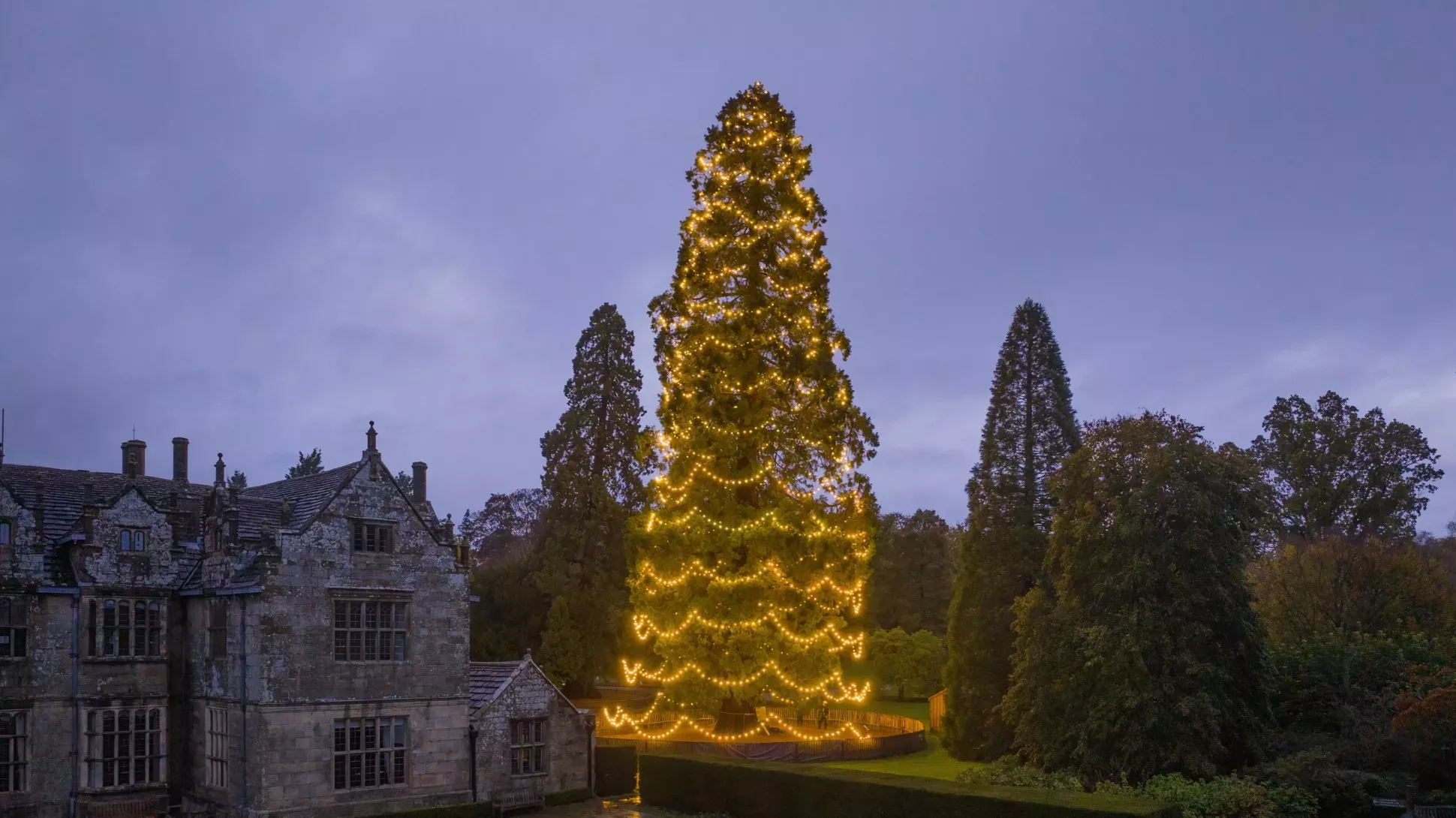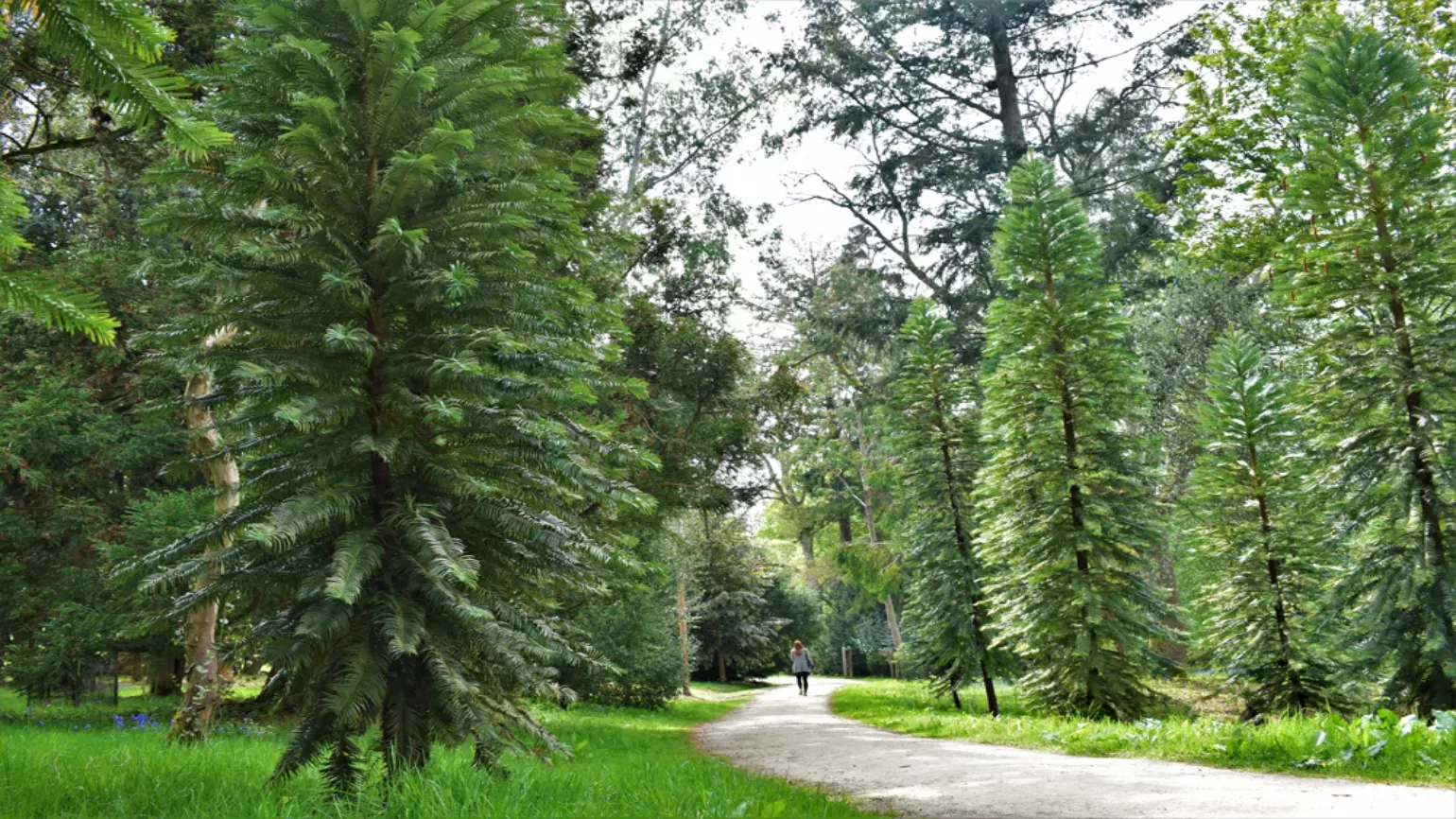1 August 2023
Meet the trees of 'Rooted'
Get to know some of the stars of Wakehurst’s summer festival.

This summer at Wakehurst, we’re celebrating one of the world's most recognisable and loved plants – trees.
Vital to human existence, trees are the life support of our planet; from storing carbon and sheltering wildlife, to providing shade and easing stress.
Meet some of the stars of the show we'll be celebrating at Wakehurst's Rooted festival this summer.
European ash (Fraxinus excelsior)
The third most common tree across the UK, at around 150 million individuals, the European ash is a stalwart of our forests and woodlands.
Ash trees are a vital part of the ecosystems in our woodlands and hedgerows. But they’re under threat from a devastating fungus, Hymenoscyphus fraxineus, better known as ash dieback.
It is predicted to kill over half of the ash trees across the country, but we’re not letting that happen without a fight.
At Wakehurst, we’re combining the strengths of horticulture and science to stop ash dieback.
Our researchers are using the genetic diversity stored within the collections of our Millennium Seed Bank to discover how to create new populations of resilient ash trees.
At Rooted, we’ve worked with Brighton-based graffiti artist SinnaOne to transform the remaining trunks of diseased trees into striking artwork. Spot our monoliths dotted throughout Bethlehem or Coates Wood.


Common oak (Quercus robur)
Tall, unyielding and ancient, the oak tree is valued both as a source of hardwood and as a cultural icon.
A number of ancient lightning gods, including the Dagda in Irish mythology, Zeus in Greek mythology and Thor in Norse mythology are associated with oak trees, due to their frequency of being struck by lightning.
Outside the realm of stories, oak is a versatile building material used in tables, chairs, floors and even ships.
Unfortunately, a disease known as acute oak decline is affecting common oaks and sessile oaks (Quercus petraea) across the UK.
Whilst we don’t know the exact cause of acute oak decline, we want to understand more about why certain trees are at higher risk.
We’re aiming to sequence the DNA of over 2000 oak trees from across Britain, to discover if there is a genetic component to acute oak decline.
At Rooted, you'll see Geraldine Pilgrim’s Tattoo, a sculpture created from recycled branches with carbon black shadows of absent oak leaves in a striking visual representation of the critical role that trees play in absorbing carbon.


European beech (Fagus sylvatica)
Sometimes known as the ‘queen of British trees’ to the common oak’s king, the European beech is found in parks, forests and streets across Britain.
Beech woodlands, with their dense canopies and ground layer of fallen leaves, provide a home for rarer plant species. This can include orchids such as the bird’s-nest orchid (Neottia nidus-avis) and the red helleborine (Cephalanthera rubra).
Beech trees have been valued throughout history as a resource. Alongside providing construction materials and firewood, they also have a role to play in the development of written language.
Beech wood tablets were commonly used for writing prior to the invention of paper. In fact, we even get the modern word ‘book’ from the Old English word for beech, ‘boc’.


Giant redwood (Sequoiadendron giganteum)
The biggest tree in the world by volume, the giant sequoia is the pride of the north-western Californian forests it calls home.
Giant redwoods have adapted to be fire resistant as they grow in fire prone areas. Their thick, spongy bark helps protect mature trees from damage, as well as the watery sap they produce.
The world’s largest, living giant redwood is an incredible 84 metres tall and over 11 metres wide, nicknamed General Sherman, and thought to be around 2,500 years old.
As a result of overexploitation and changes to fire management practices, the giant redwood is considered endangered. Luckily, tree planting schemes and new land management schemes are being employed to protect these silent giants.
Every year at Wakehurst, we light up a giant redwood as the UK's tallest living christmas tree.

Silver birch (Betula pendula)
The silver birch has been growing across the UK since the end of the last ice age over 11,000 years ago.
The wind-blown seeds of the silver birch are easily spread and can grow on new ground, which is why they are often known as a ‘pioneer species’.
Despite its rapid spread, silver birch trees have open leaf canopies, which allow plenty of light to reach the ground, encouraging a myriad of other plants to grow around them.
The silver birch grows up to 30 metres high, and is easily recognised with its silvery-white papery bark that turns black and cracked over time.
Silver birch trees form symbiotic relationships with a number of fungi species via their roots, including the well-known fly agaric (Amanita muscaria).
At Rooted, this symbiotic relationship is highlighted with the installation Wild Stones, a fascinating living mycelium piece which will be left in the garden to naturally evolve and degrade with time.


Wollemi pine (Wollemia nobilis)
With its knobbly bark, and thin needle-like leaves, there’s something almost alien about the Wollemi pine.
But this unique tree isn’t a visitor to our planet. In fact, it’s been here since the age of the dinosaurs.
This ancient species was thought to have been extinct for over two million years, until a small population was discovered in the Blue Mountains of Australia in 1994.
Today, the species is critically endangered and restricted to fewer than 100 trees in Wollemi National Park, Australia. Luckily, you can see some growing at both Wakehurst and Kew.
Despite the name, the Wollemi pine isn’t a true pine tree, but is more closely related to the monkey puzzle tree.


Yew (Taxus baccata)
Sometimes known as the tree of the dead, you’ll find yew trees in graveyards and churches all over the UK.
As an evergreen tree, the yew is symbolic of everlasting life and rebirth, and was held sacred by Druids in pre-Christian times. For the ancient Celts, the tree came to symbolise death and resurrection, which continued into the Christian era. Yew branches were carried on Palm Sunday and at funerals for many centuries.
But the tree of the dead name isn’t just symbolic. Most parts of the tree (except for the bright red arils around the seeds) are highly poisonous to mammals when ingested because they contain toxic compounds called taxines.


